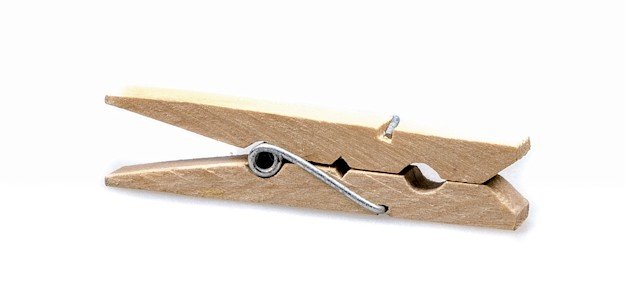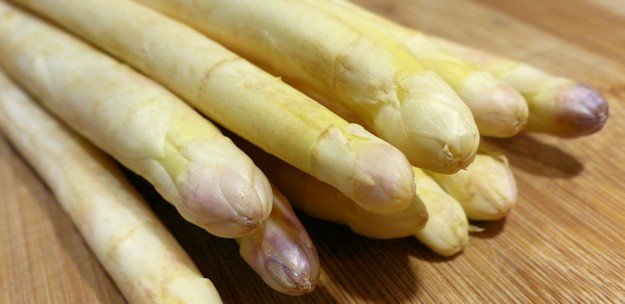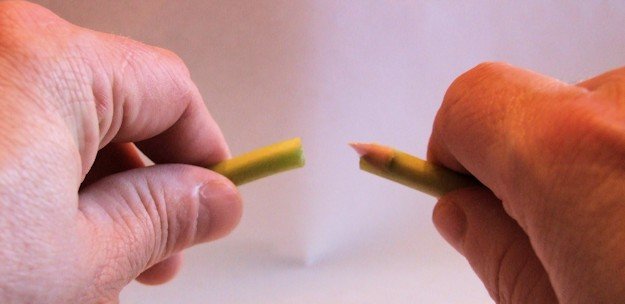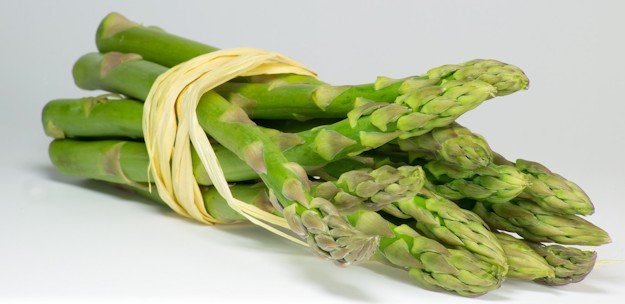May is National Asparagus Month and to celebrate this amazing vegetable, the King of Vegetables, here are 10 things that you might, or might not know about asparagus.
The Smell
This is a fact that most people know, that your pee (urine) smells after eating asparagus, however it seems that not everyone is able to detect the smell and some others don’t actually produce the smell. Experiments have found the population can be put into four groups when it comes to asparagus. There are people that produce the distinctive asparagus pee smell, those that don’t and then there are those that can detect the smell and those that can’t. So when someone says there pee doesn’t smell after eating asparagus, they could in reality just not be able to smell it.
Ditch the Water
I think this is the most important fact about cooking asparagus. According to Heston Blumenthal, the chef proprietor of the Fat Duck Restaurant, the flavor compounds in asparagus are water soluble and leak out during cooking with methods such as boiling, blanching, steaming and microwaving, however remain intact when cooked in fats and oils. So though you will hear many people tell you to blanch your asparagus, try roasted, grilled, broiled or sauteed with olive oil and/or butter instead to keep in more of that delicious, delicate asparagus flavor.
Store like cut flowers
Once harvested, asparagus rapidly starts to lose flavour and nutrients. If not using immediately you can prolong its shelf-life by treating it like cut flowers or fresh herbs and keeping it cool. Cut about half an inch off the bottom of the asparagus stems, place them into a glass of water so that the bottom 1 inch is cover. Cover the tops with a plastic bag and keep in the refrigerator for up to 4 days.
Wine pairing is tough
Because of the chemical compounds in asparagus, pairing with wine is particularly tough. Avoid oaked whites or tannic reds, and choose crisp, herbal, citrusy white wines instead such as Pouilly Fumé, Pinot Grigio, Riesling, Sauvignon Blanc , Sancerre or Sparkling wine. Other tips to help asparagus pair better with wine, is to cook it using the barbecue or broiler to create a char, cover it in a creamy sauce such as hollandaise, cheese or use thinner shoots which have less flavour.
Green, White or Purple
Most of the asparagus you encounter will be green, and you could be mistaken that white asparagus is a different genetic variety. However white asparagus, which is popular in early Spring in Northern Europe is the same plant, but it is kept in the dark, by burying the spears with dirt while it is growing which means that it cannot produce chlorophyll that accounts for the green color. White asparagus has a more subtle, sweeter flavour than green asparagus. Purple asparagus is a different variety and it sweeter than its green cousin, but when cooked it loses its color and reverts to green.
To snap or not to snap
To prepare asparagus, the woody, fibrous and tough bottom of the stem needs to be removed before cooking. There are two schools of thought on how to achieve this. The first is cut off the bottom fifth of the spear, the second is to snap the stem between the fingers and it will naturally split where the tender stem starts and the woody stem finishes. Neither method is without problems. Cutting can produce too much wastage, while snapping might not be 100% accurate enough. No matter which way you prefer the trimming can be added to stock or to make asparagus soup. Another method that is sometimes mentioned is to peel the bottoms of the spears. Peeling the stem can be done once they are snapped to remove the outer, tougher part of the stem, but it won’t get rid of the inner woody part.
The Food of Kings is Expensive
The total world production of asparagus is about 8 million tons per year, with the most, 88%, being grown in China and the next largest, 4% coming from Peru, which might seem like a lot, but demand easily outstrips supply and there are a few reasons why asparagus is still expensive to buy. The first is that it takes 3 years from planting the asparagus crown, before spears can be harvested from it. The second is that asparagus is harvested by hand. Though there are machines that transport the workers over the fields, the spears have to be cut by hand to ensure that they aren’t damaged. Thirdly asparagus loses nutrients very quickly after being cut and they must be shipped to market quickly to be in prime condition, which usually means air transport.
It’s a lily, but not a flower
Botanically asparagus belongs to the lily family, Liliaceae which also contains garlic, chives, leek, onions, etc., however in another genus. The origin of asparagus is believed to be somewhere around the Eastern Mediterranean and Persia. The word asparagus itself comes from the Persian word asparag which means sprout or shoot, which in turn gives rise to the Greek word aspharagos, and ended up as asparagus in English via the Medieval Latin word sparagus.
The shoots shoot up
Though asparagus takes 3 years from planting the crown to being able to harvest the first spear, it grows at an incredible rate once it gets going. If the conditions are just right, asparagus can grow about 10 inches in a day
Anti-Gravity
After harvest asparagus tips will naturally turn upwards (negative geotropic curvature) if they are stored on their side or upside down, hence the reason they are shipped upright or heat treated to prevent curved tips.













